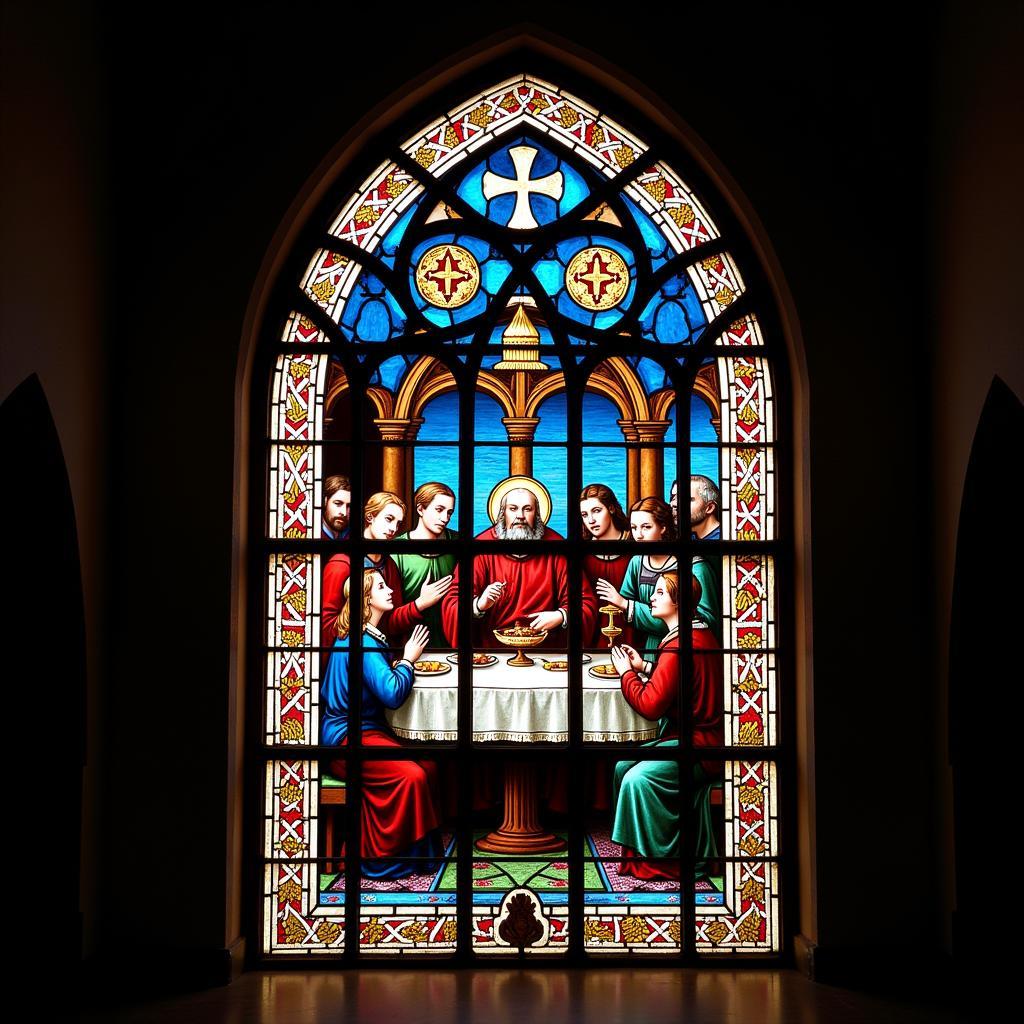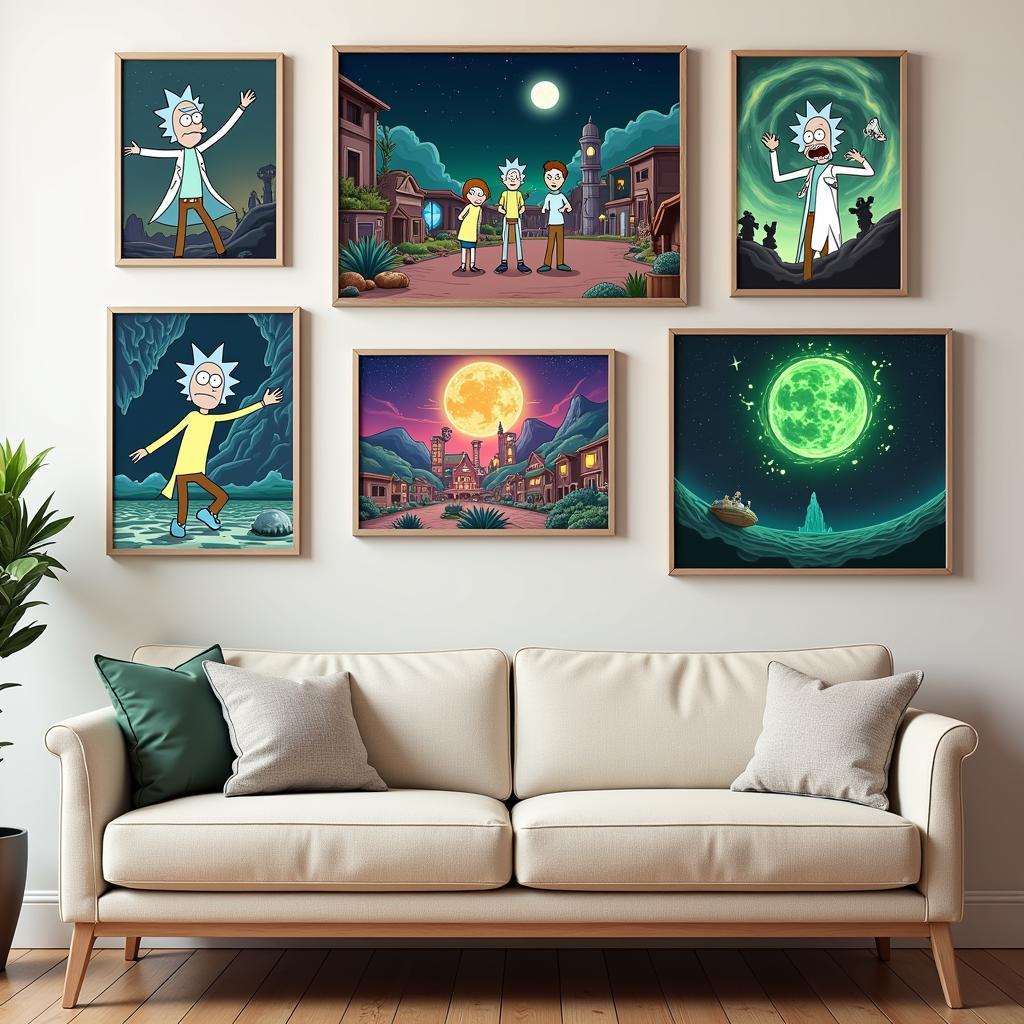Exploring the Divine: A Journey into Eucharistic Art
Eucharistic Art, a powerful expression of faith, has captivated believers for centuries. From ancient mosaics to contemporary sculptures, this art form visually narrates the sacrament of Holy Communion, inviting contemplation and reverence. This exploration delves into the rich history, symbolism, and diverse expressions of Eucharistic art.
The History of Eucharistic Art: From Catacombs to Cathedrals
Early Christian art, often found in the Roman catacombs, featured symbolic representations of the Eucharist, such as fish and bread. These veiled depictions served as both artistic expressions and coded messages for a persecuted community. As Christianity gained acceptance, Eucharistic imagery became more explicit, adorning the walls of basilicas and cathedrals. The Last Supper, a pivotal moment in Christian history, became a prominent theme, immortalized in masterpieces like Leonardo da Vinci’s iconic fresco. The development of Eucharistic art mirrors the evolution of Christian theology and liturgical practices, offering a visual timeline of faith.
The Symbolism of the Eucharist in Art: Unveiling Hidden Meanings
Eucharistic art is replete with symbolism, each element conveying deeper spiritual truths. The chalice and paten, central to the sacrament, represent sacrifice and nourishment. Grapes and wheat, symbolizing the bread and wine, signify Christ’s offering of himself. The pelican, often depicted piercing its breast to feed its young, is an ancient symbol of Christ’s sacrifice. Understanding these symbolic layers enriches our appreciation of Eucharistic art, allowing us to connect with the profound messages embedded within.
Modern Interpretations of Eucharistic Art: Embracing New Forms
Eucharistic art continues to evolve, embracing contemporary forms and materials. Artists today explore diverse mediums, from photography and digital art to installations and performance art. These modern interpretations often engage with contemporary social and theological issues, offering fresh perspectives on the meaning of the Eucharist in the 21st century. The enduring power of this art form lies in its ability to bridge the gap between tradition and innovation, inviting viewers to engage with the sacred in new and meaningful ways.
What inspires artists to create Eucharistic art?
The inspiration for Eucharistic art often stems from a deep personal faith and a desire to express the profound mystery of the sacrament. Artists may draw upon biblical narratives, liturgical traditions, or their own spiritual experiences to create works that resonate with viewers on an emotional and spiritual level.
“Eucharistic art is not just about depicting a ritual; it’s about capturing the essence of divine love and sacrifice,” says renowned theologian, Dr. Amelia Hart. “It’s a visual prayer, an invitation to encounter the sacred.”
Incorporating Eucharistic Art into Worship: Enhancing Spiritual Experience
Eucharistic art can enrich the worship experience by creating a visually stimulating and spiritually uplifting environment. Stained glass windows depicting biblical scenes, altarpieces showcasing the Last Supper, and liturgical vessels crafted with artistic detail can all contribute to a sense of reverence and awe. Integrating art into worship can deepen our understanding of the Eucharist and foster a stronger connection with the divine.
How can I learn more about Eucharistic art?
Exploring online resources, visiting museums and galleries, and attending lectures or workshops on religious art are excellent ways to delve deeper into the world of Eucharistic art. Engaging with local artists and faith communities can also provide valuable insights and perspectives.
“Art has the power to transcend language and culture, speaking directly to the soul,” notes art historian, Professor David Miller. “Eucharistic art, in particular, possesses a unique ability to connect us with the timeless mystery of faith.”
 Stained Glass Eucharistic Scene: The Last Supper
Stained Glass Eucharistic Scene: The Last Supper
Conclusion: The Enduring Legacy of Eucharistic Art
Eucharistic art, a testament to the enduring power of faith, continues to inspire and challenge us. From ancient symbols to modern expressions, this art form offers a profound visual language for exploring the mystery of the Eucharist. By engaging with this rich tradition, we can deepen our understanding of this central sacrament and strengthen our connection to the divine.
FAQ
- What are some common symbols used in Eucharistic art?
- How has Eucharistic art changed over time?
- Where can I find examples of Eucharistic art?
- What is the significance of the Last Supper in Eucharistic art?
- How can I incorporate Eucharistic art into my personal devotions?
- Are there contemporary artists who specialize in Eucharistic art?
- How can I support artists who create religious art?
Need support? Contact us 24/7: Phone: 02462573573, Email: [email protected] or visit us at Savico Megamall, 7-9 Đ. Nguyễn Văn Linh, Gia Thụy, Long Biên, Hà Nội 10000, Việt Nam.


